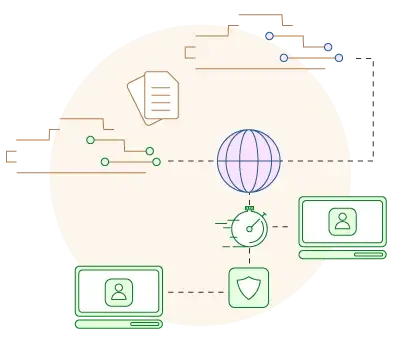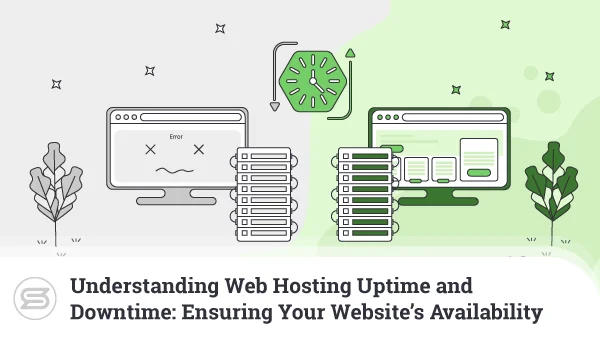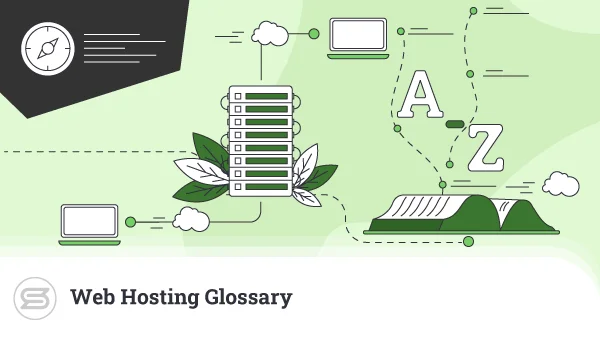What Are the Different Types of Web Hosting?
Web hosting is, on the face of it, at least, a relatively simple concept. Being connected to the internet means that your device is a part of a vast network of computers, servers, and other internet-enabled devices.
Whenever you enter a domain name, your device finds and downloads the content of the website associated with it from a server that is also connected to the said network. The hosting company’s job is to provide the server and ensure that it’s accessible for as much of the time as possible. This is the explanation in very simple terms.
In this day and age, different projects have different requirements, and hosting providers are in a race to ensure that as many of these requirements are met. They create different plans in order to ensure that they can offer a hosting environment suitable for websites of all shapes and sizes. As a website owner, however, it’s up to you to choose the right plan, which, given how many and how different they are, could be easier said than done.
Today, we’ll explain some of the terms you might stumble upon while you’re looking for a hosting solution for your website, and we’ll explain the differences between the most popular types of hosting. Hopefully, this will help you figure out which service best suits your needs.
Shared hosting
Traditionally, this is considered to be the natural starting point for your brand new project. Unless you expect some sort of explosive growth in the very first few months of your website’s existence, you will most likely start with a shared hosting plan. There are two very good reasons for this – the shared hosting packages are usually well-suited for small websites with relatively low levels of traffic, and they are also the cheapest available option.
On the one hand, you’re keeping the costs to a minimum while the project is still in its infancy, and on the other, you have a platform that, at least initially, should be adequate for what you need to do with it. How are hosting companies capable of offering this type of service at such a low price?
As the name suggests, in a shared hosting environment, multiple different websites share the same server. Depending on the hardware characteristics, a single server can host dozens of websites, which makes it extremely cost-effective for the hosting provider. Meanwhile, because the hosted websites don’t attract significant levels of traffic, they don’t put too much load on the server, and the performance is decent.
Starting off with a shared hosting plan might seem like the most logical decision, but there are certain disadvantages that you need to bear in mind.
In a shared hosting setup, all the websites located on a server use the hardware resources all the time. The RAM, CPU, and storage space aren’t evenly distributed among the different projects, which means that at any given time, a single website could take up more resources than the rest.
Hosting companies usually keep an eye on accounts that consume too much power and suggest an upgrade when the rest of the websites start to get affected. Sadly, sometimes, a website becomes popular overnight and gets flooded with traffic before the hosting provider or the owner could react.
In such cases, the server might be overwhelmed with the sudden spike, and it could slow down or be completely knocked offline. If that happens, all the websites that are hosted on the same server will go down as well.
This is often referred to as the bad neighbor effect, and it manifests itself in a few other scenarios. For example, if one of the websites on a shared host is targeted by a DDoS attack, the rest of the accounts will suffer as well. In much the same way, if just one of the accounts is sending spam, the server’s IP address will be blacklisted, and dozens of people will be unable to send their emails.
In other words, pricewise, the shared hosting solutions are unbeatable, but they do come with certain limitations and disadvantages that could make one of the other options more appealing.
Virtual Private Server (VPS) hosting
People often think of Virtual Private Server (VPS) hosting as the next logical step for a website that has outgrown its shared hosting account. We reckon, however, that this might not be the most accurate description.
Even if you’re only just starting, you should at least consider the VPS solutions that the hosting provider of your choice offers. The price difference between VPS and shared hosting has shrunk significantly over the last few years, and the benefits a virtual private server offers over a simple shared hosting account are so many that you might end up getting more for your money.
In a VPS scenario, you can once again have multiple different projects hosted on the same physical machine, only this time, they won’t be sharing the same resources. Instead, each account owner is given a separate virtual machine that has its own set of resources dedicated just to it. There are a number of advantages to this setup.
For one, even if they are on the same machine, the accounts are isolated, meaning that if there is heavy traffic on one website, the rest of the accounts won’t be affected. You have a set of guaranteed resources that are available to you at any time, and your website’s performance is not dependent on what the other users are doing.
Every VPS comes with a dedicated IP, which also means that you needn’t worry about your “neighbor” sending spam and having your IP address added to a blacklist.
Last but not least, VPS plans offer much more flexibility compared to the more traditional solutions. Many hosting providers let you configure your own VPS with precisely the amount of resources you need.
You get to pick how much RAM, CPU power, and storage space you’ll have, and you don’t need to pay for any hardware that you’re not going to use. Best of all, as your website grows more popular, you can easily add more resources.


Dedicated server
Renting a dedicated server is quite similar to having a VPS. Once again, you pay for a predetermined set of resources that are reserved just for you. You don’t share them with any other accounts, which means that the performance of your website can’t be affected by other users.
With a dedicated server, however, you are in charge of the physical machine. Compared to a VPS, you get a lot more power with a dedicated server, which makes this solution suitable for popular projects that attract a lot of traffic. That’s not the only thing that sets the two types of hosting apart, though.
More often than not, when you order a dedicated server, the hosting company installs the operating system (sometimes, you can choose which one you want exactly) and takes care of some of the basic configuration settings. From then on, you are left to your own devices. You usually get root or administrative access, which means that you have the freedom to configure the server exactly the way you want it and set up the perfect hosting environment for your project.
Whether or not this is an advantage depends on how experienced you are as a system administrator. Novice users will certainly find the task rather intimidating, and they might want to consider hiring a professional to take care of the technical aspect of the operation.
This will leave them enough time to keep a close eye on the budget. Dedicated servers are by far the most expensive of the traditional hosting solutions currently available on the market.
Cloud hosting
So far, we’ve been talking about pre-paid hosting packages that entail the storage of your website’s files and databases on the hard drive of a physical machine. This is now considered the traditional type of hosting.
Cloud hosting takes this approach and turns it on its head. In a cloud hosting environment, the website’s files and databases are stored on a cluster of physical and virtual servers that are sometimes located in several different continents. One advantage of this is that if a hardware component on one server fails, the website can use the resources provided by the other machines in the cluster.
In effect, your website has access to a virtually unlimited pool of hardware resources that it can tap into at any time. The billing mechanism is often different, as well.
Instead of charging you for a predetermined period of time during which your website will be hosted on a physical or a virtual server, some cloud hosting providers offer a pay-as-you-go model, which means that at the end of the billing period, you don’t pay a predetermined sum but rather a bill that is dependent on how active your website has been.
The cloud hosting solutions are especially suitable for websites that experience sudden traffic spikes, and the owners of these projects will certainly enjoy the flexible billing model. The only problem is that maintaining all that complex infrastructure can push the costs through the roof, especially if you’re running a popular website that enjoys a steady stream of visitors.
Managed vs. Unmanaged hosting
Starting work on a new project could be a scary experience. Plenty of people assume that running a website might entail maintaining a server and doing serious sysadmin work to ensure that it runs smoothly. This isn’t necessarily the case.
If you pick a managed virtual or dedicated server, the hosting provider will be responsible for anything from setting up the server to installing patches and updates, configuring the firewall, and monitoring the server’s performance. By contrast, if the server is unmanaged, pretty much all of the work related to its configuration is left to the user.
Novices will appreciate the fact that they have fewer things to worry about if they go for the managed server solutions, while experienced website owners with complex projects and requirements will enjoy the freedom of an unmanaged VPS or dedicated server.
Colocation
Servers are delicate pieces of equipment that require some very specific conditions to operate smoothly. Leave them in the corner of the room, and you’ll start having overheating problems as soon as the load increases.
What’s more, if a server is to reliably deliver content to users all over the world, it will need a high-speed internet connection and a backup power supply in order to avoid unexpected shutdowns and downtime.
That’s why we have data centers – facilities dedicated to housing servers and maintaining them in perfect working order. Data centers are equipped with high-end HVAC systems to ensure that the servers don’t overheat.
Backup generators kick in in case of a power outage, expensive networking equipment keeps the servers connected to the internet all the time, and often, there’s a team of technical experts on hand to fix any issues that might arise. Even if you have a server of your own, it’s often impossible to replicate all these conditions in-house. That’s why many data centers offer colocation services.
In simple terms, colocation means paying to have your own server housed in a data center. Managing the server is still your responsibility, but the data center guarantees that it’s stored correctly and is accessible all the time.
Conclusion
The hosting business is not as simple as it appears at first. That’s why hosting providers employ armies of extremely talented people with years of experience and task them with creating the best possible environment for your website. Even with all their efforts, however, your project won’t perform well if it’s not on the correct hosting plan.
It’s up to you to learn what the different types of hosting offer and to figure out for yourself which package suits your website’s requirements the best.
FAQ
Why are there so many different types of hosting?
Quite a few things have happened since the World Wide Web was invented some thirty years ago. Websites are no longer simple collections of HTML documents and images. They are now complex systems that rely on sophisticated software to run smoothly.
Hosting companies must keep up with the trend and must be sure that every single client is given an adequate solution.
Why is choosing the right hosting plan so important?
It’s easy to overlook how important the performance of your website is. On the one hand, the faster it loads, the happier the users are and the more likely they are to come back and do business with you. Load times are also an essential SEO metric and can help with your website’s Google ranking.
The hardware resources that you have at your disposal is one of the main factors that contribute to your online project’s performance. For the last thirty years, hosting companies have developed technologies and solutions to guarantee that there’s a suitable plan for every single website. All you need to do is choose the one that fits your requirements the best.
How do I choose the right hosting plan for my project?
There is no simple answer to this question. Many people are tempted to base their decisions solely on the number of visitors they get each month, but there are numerous other factors that should play a key role in your choice of a hosting service.
You need to think about specific requirements that you may have (e.g., particular software that you might need to use, administrative access, etc.), and you must check all your options before you make a final decision. If you’re not sure about anything, you’re better off contacting the customer support department of the hosting company you’ve chosen and inquiring about the features you get with each individual hosting plan.
What will happen if I choose the wrong type of hosting?
If your website doesn’t get the hardware resources it needs, it will slow down significantly, and if the lack of power is too serious, it could knock the entire server over. In a shared hosting scenario, this would mean that dozens of other websites will also go down. Ensuring that the hosting plan is suitable for the levels of traffic you’re expecting is crucial, but it’s not the only thing you need to consider when choosing the service.
Complex online projects have requirements that often span beyond what the basic hosting packages have to offer. Sometimes, a higher level of access is needed to ensure that the website can be configured correctly, and often, it needs support for certain software applications if it’s to run correctly. You must ensure that all the requirements are met before you choose a specific plan.



